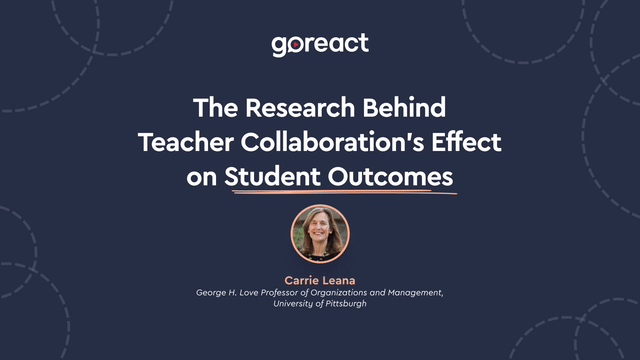Carrie Leana:
Part of it is teacher human capital. How experienced is the teacher? How much ability does he or she have? Part of it is team social capital. How strong are these relationships among the teachers? But what I want to focus on is this interaction between teacher-human capital, their ability and their competence, et cetera, and their social capital. And here, what you see is something very interesting. That the punchline here is … And this is just a very simple kind of depiction of what we found. That on one side you see gains in student achievement and then at the bottom you see the strengths of ties among teachers and teams, whether those are weak or strong. And then the ability of these teachers.
And what you see is when social capital is low, that the ties are weak, that the kids don’t do very well. When the ties are strong, you see high-ability teachers doing very well and low-ability teachers also doing much, much better. What you also see though, and here, it’s the same gains in student achievement. Sparse ties, remember, you only talk to one or two people. Dense ties, you have a team that really behaves as a team and they talk to one another. That what you see is that dense ties are incredibly important for low-ability teachers. That when the ties are sparse, their kids do poorly. When the ties are dense, their kids do much, much better. With high-ability teachers you don’t see that much. They don’t get as much out of these dense ties, but low-ability teachers really do.
So summary. Interaction of human and social capital, teacher-human capital. Again, experience ability, it really matters for student achievement. A one standard deviation increase in teacher ability, 2.2% gains for students. But look at social capital. It’s two and a half times more important. That social capital benefits students even more. One standard deviation increase in team social capital, 5.7% gain for students, and that’s a big one. 5.7 is a big gain. Just by people interacting with each other and talking about the work. And the combined human and social capital effects, I think is what’s particularly interesting. Frequent and close interactions with peers, maybe a handful of people that you work well with, that’s really good for high-ability teachers. Dense ties, everybody talking, really good for low-ability teachers. So dense ties benefit less-able teachers, strong ties benefit more-able teachers. So just to close here, if I’ve convinced you at all … And again, this is a very short summary of some of the work that we’ve done, that from here I think Wendy is going to be more of the expert.
So if I convinced you at all, what do you do about that? Well, how do you enable and enhance social capital in the school? And just to summarize, how do you improve performance in the school? Again, the conventional wisdom is we talk about credentialing, professional development, getting a teacher’s ability and knowledge and experience up, and then we monitor them like crazy to make sure that that’s having an effect. If you really want to improve school performance, human capital is important, there’s no question. But if your reform efforts focus just there, you’re going to fail. Social capital is even more important, two and a half times as important. So the shift from focusing on the ability of individual teachers to the collective ability of the school and also tailoring that social capital to what the teachers need.





